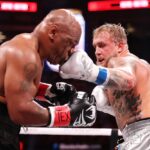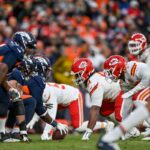The case for PEDs in sports
“Can you imagine if Davis, the all time Denver Bronco great, would have gotten his knee back in order and returned in glorious fashion like Peterson did? This silly debate whether he should be in the Hall of Fame or not would never have become the go-to conversation on Denver talk radio because he’d already be in the Hall had he been allowed to take advantage of modern chemistry.”
When Darren Woodson came out recently and proclaimed Performance Enhancing Drug use was a definite component of NFL life, we all just shook our heads because it wasn’t really news. Being shocked about PED’s is a thing of the past because we all know our favorite athletes are using something to keep up with the competitive nature of pro sports. Times sure have changed because I can remember how outraged I was when it was clear that Barry Bonds was using the “clear” to blast home runs like he was playing rec league softball – well on his way to setting the Major League record. Funny how it never occurred to me that maybe he and his fellow juice-heads Mark McGwire and Sammy Sosa were utilizing a little chemical help to do it. But now? When someone makes the claim of PEDs we just nod and act mildly disgusted like finding a politician with his hand stuck in the cookie jar. And a prostitute.
So when PED use was happening in the heyday of the McGwire/Sosa homerun chase, it either didn’t occur to us that they were using or we just didn’t care. Bud Selig whistled past that graveyard the whole summer as the two sluggers drew more and more people back to baseball just a few years after the strike season of 94-95 that cooled off attendance and soured many on the game. If there’s one thing that would get people back to the ballparks, it was homeruns and Selig wasn’t about to halt that gravy train. But by the time Bonds got around to breaking Hank Aaron’s home run record, the bloom was off the PED rose and Selig kept a respectful distance because we were now all well versed on how Bonds managed to leave the yard that many times. And when what they were doing behind the scenes would eventually become public knowledge, it would leave a bad taste in everyone’s baseball-loving mouth.
Apparently how many of the players were accomplishing their great feats of strength was not only legal at the time, it was casually allowed by the league’s commissioner who was either diabolically smart or historically dumb to allow it to continue. They were using a chemical to make them stronger and faster while growing their heads and shrinking their balls simultaneously. But since it was technically “legal”, the area is so gray, black and white don’t know even who has custody. If nearly everyone was doing it, shouldn’t it just be chalked up to the era and move on? At this point, yes. But we should always know how those records were set and why. It can be argued that PEDs don’t have a place in sports because it isn’t just one person’s ability against another’s: it’s who’s got the better drugs.
But they do have a place OFF the field.
Athletes get paid an obscene amount of money to play a game you play on the weekends with your buddies. The difference is when you pull a hammy in a pickup game of hoop, a billionaire owner isn’t sweating the millions being flushed down the toilet.The goal of any professional athlete is to stay on the field and play the best they can. This makes him/her money, gives them the glory associated with being a champion and more importantly gives the team owner a return on his investment. If someone is paid millions of dollars to play a sport, shouldn’t the goal of that player – and every team owner – be to get back as soon as possible? The answer is yes. AND by any means necessary.
If you were unable to work and there was a drug you could take to get back on your feet, you’d take it in an instant. Your employer and anyone else who depended on you would endorse this as well. If you can’t get a boner, you take a drug to make everyone you used to stick it in happy again. This is the epitome of “performance enhancing” and we accept it in all facets of life except sports.
No one knows how Adrian Peterson returned to the gridiron so fast after his knee injury, but when he did, he was electric: Nearly setting the NFL record for rushing in a single season and looking like a monster doing it. If he took something to aid in his recovery, I’m sure as hell glad he did because he is a special player that any football fan should want back on the field. Robert Griffin III suffered a gnarly knee injury this season and faces around the same amount of healing time that Peterson did. Will he be back in the great form he displayed this past season? As fans, we sure hope so. Dan Snyder hopes so too. But no one knows for sure. If Griffin is smart, he’d better be taking something to get him back out there pronto.
The NFL should test heavily for all forms of PEDs – all year round. They have no place in a game that should be decided by the skill and hard work of its athletes. But if a player gets hurt, like Peterson or RGIII, a special allowance should be made to allow them to use whatever it takes to get them back playing their sport. Ray Lewis suffered a nasty injury that should have left him out for the season and whether he admits or not, Lewis probably took something to get back in time to bounce the Broncos out of the playoffs and ride that wave to the Super Bowl. I despise Lewis and hated seeing him do it, but by all rights he should have done what he could to heal up enough to accomplish that amazing feat.
We don’t want someone winning a Super Bowl strictly because they took PEDs, but we certainly want them to get back out there and try because of PEDs.Under doctor supervision, an injured player should be allowed take any combination of steroids, human growth hormone or anointed goat blood to get them back out there. Once they are back, they would be routinely tested to ensure they still weren’t taking the drugs.By allowing this, you can institute even tougher rules against taking the drugs because you’ve offered the players an opportunity to take advantage of them under this special circumstance. Unions will fight hard against testing, but if you’re allowing the players to do PED’s, further testing should be a fore gone conclusion. The players are already taking them, so the league would be accepting the reality of that situation, while in the process getting their superstars back faster and cracking down on those using them against the new rules.
Terrell Davis’s career was cut short by a knee injury that he sustained while chasing down a Brian Griese INT. He never fully recovered from it and his assuredly Hall of Fame career was put on ice. Can you imagine if Davis, the all time Denver Bronco great, would have gotten his knee back in order and returned in glorious fashion like Peterson did? This silly debate whether he should be in the Hall of Fame or not would never have become the go-to conversation on Denver talk radio because he’d already be in the Hall had he been allowed to take advantage of modern chemistry. I’m guessing someone likeDavis would pride himself on never taking PEDs, but if he was legally allowed to use them to heal? His career would have been extended as well as the Broncos winning ways.
PEDs have soured various professional sports for the fans who wanted to believe their incredibly buff heroes were doing what they do from god given talent and not from chemical enhancement. But since performance is everything and the old adage of “time is money” especially applies in the high stakes world of pro sports, there’s no reason why PED’s can’t be embraced and used effectively to make those sports even better. Terrell Davis’s Hall of Fame chances, Barry Bonds’s ever shrinking head and growing balls agree.





